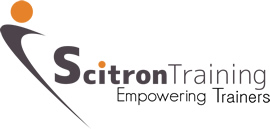(Based on the 7 levels of Bloom's taxonomy)
This is an extremely helpful list of suggested action verbs to use when writing training objectives describing learning in terms of level of sophistication according to Benjamin Bloom’s taxonomy of objectives.
If you envision Bloom’s ideas as a ladder, the lowest level, knowledge, addresses only recall and provides training that askes learners to do little more than recite a series of steps in a process or memorize some definitions of terms.
The remaining climb up the ladder would include, in order, comprehension, application, analysis, synthesis and evaluation. This tool outlines the levels of the taxonomy and offers suggestions for action words- the root of learner performance objectives- appropriate for each.
| Action words for each of the 7 Bloom taxonomy’s levels | |
| 1- Fact objectives | Define /Name/ Record/ List/ Repeat/ State/ Recall/ Recognize /Record |
| 2- Understanding or comprehension objectives | Discuss / Describe / Explain / Identify / Translate / Restate / Express / Convert / Estimate |
| 3- Application objectives | Compute / Demonstrate / Illustrate / Operate / Perform / Interpret / Apply / Use / Practice |
| 4- Analysis objectives | Solve / Compare / Appraise / Distinguish / Contrast / Classify / Differentiate / Categorize / Critique |
| 5- Synthesis objectives | Synthesize / Design / Summarize / Diagnose / Manage / Plan / Propose / Hypothesize / Formulate |
| 6- Attitudinal objectives | Show sensitivity / Respect opinions / Be willing to assist / Accept responsibility /Demonstrate commitment |
| 7- Skill objectives | Perform / Demonstrate / Show / Compute / Teach / Role play / Operate / Complete / Design / Conduct / Take / Do |
| Examples of objectives | |
| Fact objective | By the end of this training, participants will be able to list ……. |
| Understanding objective | By the end of this training, participants will be able to describe…. |
| Application objective | By the end of this training, participants will be able to demonstrate…. |
| Analysis objective | By the end of this training, participants will be able to contrast…. |
| Synthesis objective | By the end of this training, participants will be able to design…. |
| Attitudinal objective | By the end of this training, participants will be able to demonstrate…. |
| Skill objective | By the end of this training, participants will be able to perform…. |
When you complete this course, you will be able to
• Define and identify what affects motivation
• Discuss the impact of leadership style on motivation
• Identify your leadership style
• Identify and determine different leadership strategies
• Explain the impact of effective communication on motivation and leadership
• Demonstrate effective verbal and nonverbal communication skills
• Use positive reinforcement and coaching skills
• Give corrective or negative feedback to keep motivation intact and maximize workers’ productivity
• Use the performance appraisal process effectively
• Recognize the benefits of teamwork and win-win situations
• Describe the difference between compromise and collaboration
• Assess the impact of your style on team development
• Remove barriers to teamwork and overcome resistance to change
• Develop a strategy to promote and build teams
• Discuss ways to maximize individual workers’ learning
• Identify common pitfalls made in on-the-job training and ways to avoid them
• Systematically plan, implement, and follow up with on-the-job training skills
• Explain your role in customer service and the overall company image
• Use effective communication skills with customers to build relationships and establish a rapport
• Demonstrate effective conflict resolution techniques
• Develop personal action plans for improvement








